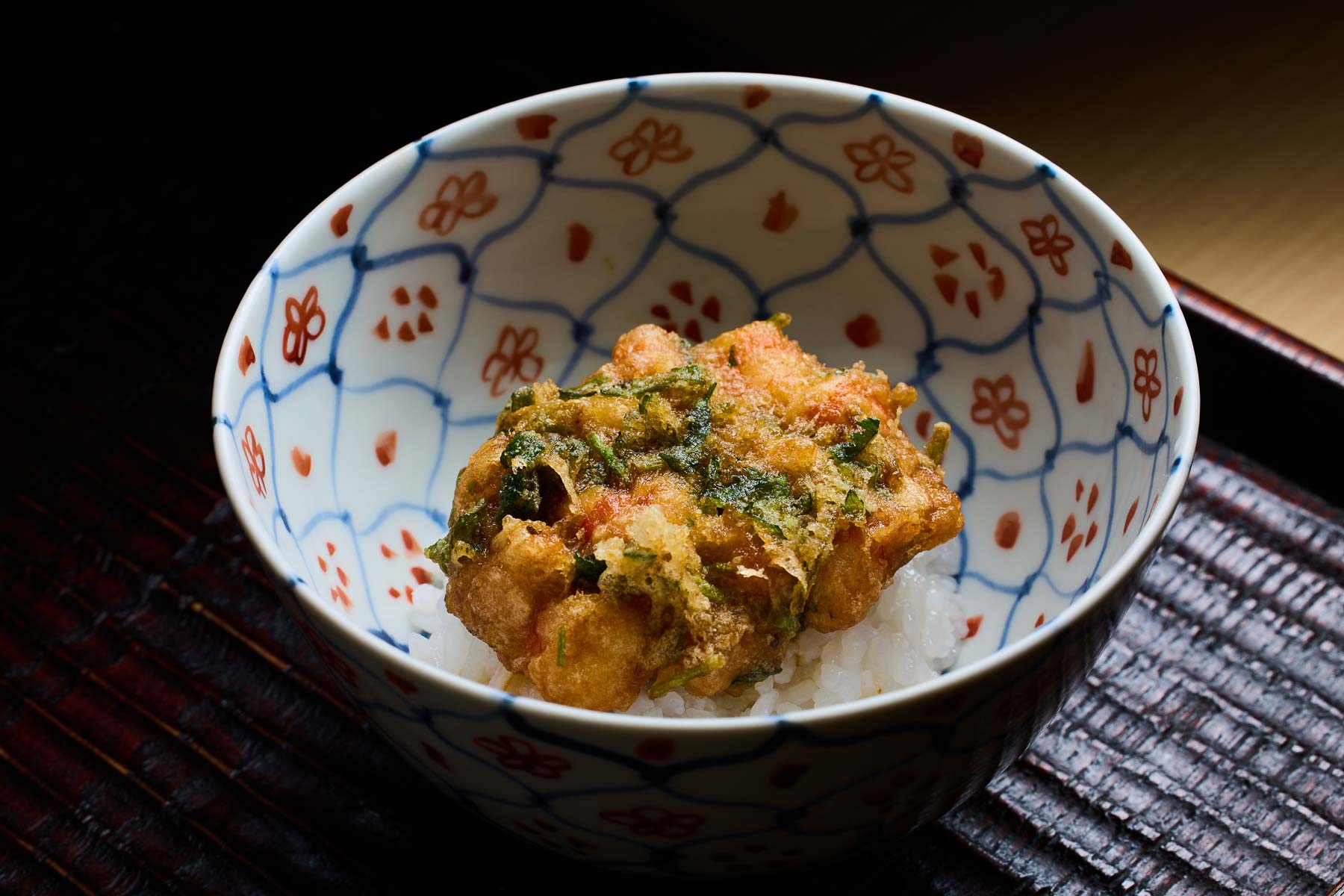
Osaka
Numata
ぬま田
Numata is a cultural experience where craftsmanship and artistry come together. The omakase at this award-winning tempura restaurant is driven by the ingredients of the season, alternating between fresh seafood and vegetable courses. Here, reservations are notoriously hard to secure, a testament to the quality of Chef Kazuya Numata’s cuisine. Rooted in classical Japanese techniques, his impeccable skills draw out the pure flavors of the selected ingredients.
Relocating to Kitashinchi from Tenjinbashisuji in 2020, Numata continues to draw a devoted following of foodies who become captivated by the exceptional cuisine. Since opening his first restaurant at the age of 26, he has expanded his reach through his numerous establishments, including Numata So and Tenboshi, solidifying the status of tempura in Kansai’s fine-dining scene.
The dining room at Numata exudes understated elegance. Earth-toned walls and the warm grain of solid wood create a tranquil space. At the center of the pristine counter rests a deep frying pan and a cutting board positioned at eye level. With just 8 seats at the counter, the setting offers a memorable and intimate experience that brings guests up close to the craft.
The tempura here is extremely light and crisp, allowing the natural flavors of the ingredients to seep through. The secret behind the excellent cuisine is not only in the selection of high-quality ingredients, but his fastidious attention to technique.
“Fresh oil, balanced batter, and the right temperature — those are the three pillars,” says Numata. “Every detail changes with the season and the condition of the ingredients.”
The tempura is served on handcrafted ceramic leaf plates by Nara-based potter Kai Tsujimura, with side dishes presented in sparkling Tenma Kiriko and vintage Baccarat glassware, further enhancing the dining experience.
CUISINE
Craftsmanship and artistry
The omakase, served for lunch and dinner, offers a carousel of fresh seasonal flavors. The meal typically begins with a few light appetizers, followed by a dozen tempura courses and a hearty dish of kakiage over rice or chazuke. The tempura portion is served in a delicious sequence that alternates between seafood and vegetables. With an exceptionally light batter, guests enjoy the meal until the very end.
The kuruma prawn tempura is a signature dish here. The heads are first fried at low temperature until crisp, then one body is cooked rare, and the next more well done, offering a comparison of different textures. Butterbur sprouts, with their crisp bitterness, are a seasonal treat in the spring. Kisu, or Japanese whiting, is sweet and delicate, while fried conger eel, served with clay pot rice, offers great richness.
The tempura batter is made from free-range eggs from Hyogo Prefecture and chilled mineral water from Nose. Wheat flour is incorporated differently for each ingredient, and even the airiness of the batter is modulated. The frying oil is a delicate blend of two sesame oils, replaced up to three times during the meal to keep the flavor light and clean.
With each course served immediately while hot and crisp, guests are encouraged to savor the tempura with no sauce first, unless recommended. A pinch of Andean rock salt or Amakusa salt will help bring out the ingredient’s natural flavor, the chef explains. The closing kakiage, made with a mix of prawns, kobashira and mitsuba, is deeply satisfying, whether served over rice or steeped in tea.
INGREDIENTS
Numata sources his ingredients with discernment, building close relationships with producers and wholesalers across Japan. Special ingredients shift with the seasons—scallops and kasugo in spring, abalone and sweetfish in summer, grouper in autumn and cod milt in winter. Kuruma prawns, white tilefish and grouper are delivered directly from the chef’s hometown of Amakusa.
In addition to sake, beer, shochu, champagne and a wine list of rare vintages, the non-alcoholic offerings include a selection of Chinese, Taiwanese and Japanese teas, as well as homemade ginger ale. Champagne and wine are available by the glass or bottle, allowing guests to enjoy pairings that suit their liking.


CHEF
Kazuya Numata
VEGETABLES
Numuta sources seasonal produce from growers across Japan. Mountain vegetables such as koshiabura and bamboo shoots are treasures during spring time; corn and asparagus in summer; matsutake and morel mushrooms in autumn; and root vegetables like lotus root and lily bulb in winter.
Most vegetables arrive at the restaurant untrimmed to keep their freshness. "Once cut, they begin to lose their vitality," says Numata. “I slice them just before frying, in front of the guests. This helps keep the natural flavors, moisture and bitterness until right before they are served.”
Course
- The price includes our booking fee of ¥8,000
- The price includes our booking fee of ¥8,000












